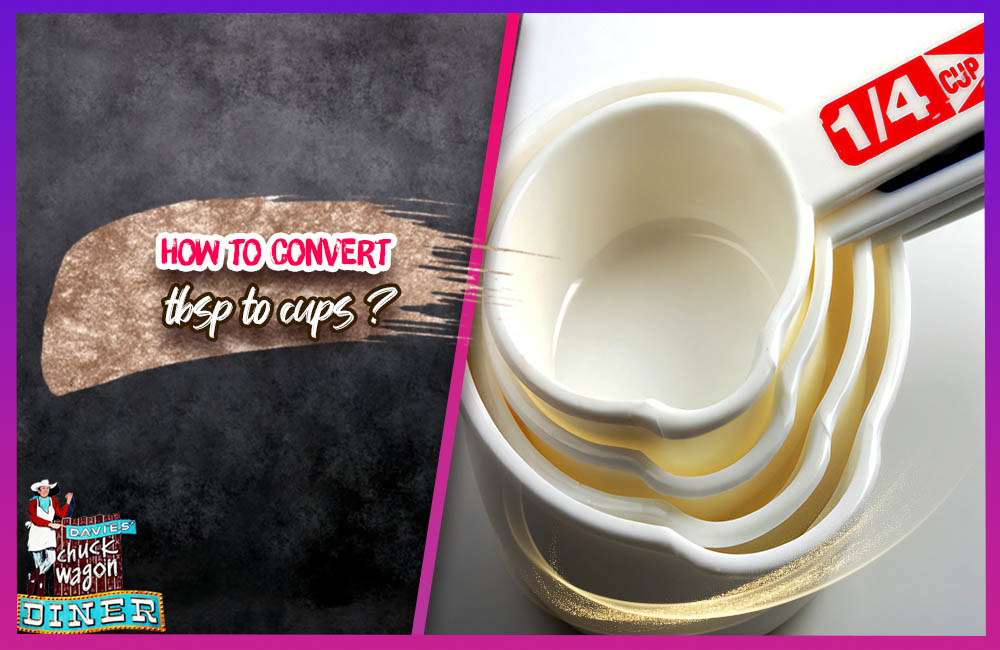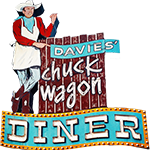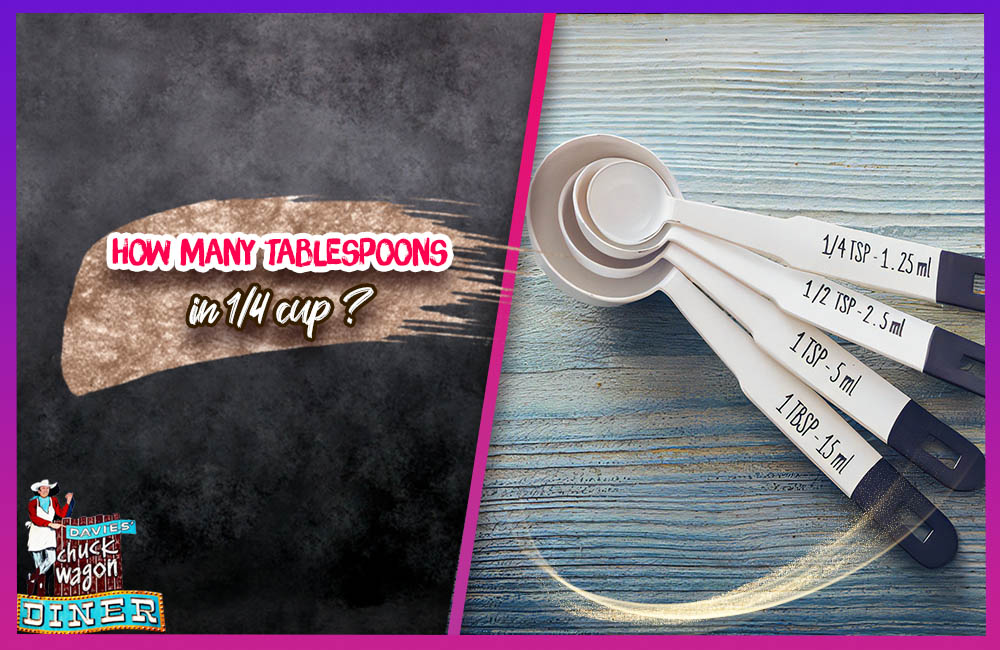How many tablespoons in 1/4 cup? Don’t worry—we know the answer! In this blog post, we will show you exactly how many tablespoons are in one-fourth of a cup so you can cook with confidence. Read on for an easy explanation and some handy tips that’ll make measuring your ingredients simple.
What does “tablespoon” mean?
Table of Contents
The term “tablespoon” is derived from the traditional custom of diners taking a spoonful of food from a communal bowl before placing it onto their individual plates. A tablespoon is an informal measurement and usually refers to the amount of food that can fit into a standard-sized spoon.
Tablespoons are often used in cooking recipes as this helps to make measurements easier for cooks. In the us, one tablespoon equals roughly 14.8 ml or 0.5 fluid ounces, although this can vary slightly depending on what you are measuring.
Converting between tablespoons and cups is a key skill when it comes to cooking and baking at home. Knowing how to accurately measure ingredients will ensure that your recipes turn out perfectly every time.
How many tablespoons in 1/4 cup?
A quarter cup is equal to 4 tablespoons, so there are 4 tablespoons in ¼ cup. It’s also important to note that a tablespoon is three times larger than a teaspoon, so if you need to convert from teaspoons to tablespoons or vice versa, you can either multiply or divide by 3.
For example, if you have 1 teaspoon of an ingredient and need to know how many tablespoons it equals, simply multiply the number of teaspoons by 3 (1 teaspoon x 3 = 3 tablespoons).
Similarly, if you have 6 tablespoons of an ingredient and need to know how many teaspoons it equals, divide the number of tablespoons by 3 (6 tablespoons ÷ 3 = 2 teaspoons).
It’s often helpful when baking or cooking with measurements to have a set of measuring spoons on hand. This way, you can easily measure out the specific amount of an ingredient without having to do any mental math or conversions. It also ensures that your recipe turns out just as it should!
In addition to tablespoon and teaspoon measurements, there are other measurements such as cups and milliliters that may be used in different recipes.
Imperial measurements vs metric
When it comes to measurements, it can become confusing when trying to convert between imperial and metric measurements.
Typically uses the imperial system for weights and measures, while most other countries use the metric system. For example, a quarter cup in the U.S. Is equivalent to 4 tablespoons (or 59 milliliters when converted to metric). In contrast, a quarter cup in some other countries may be referred to as 60 milliliters, which would equal 2 tablespoons plus 2 teaspoons when converted into imperial measurements.
Also keep in mind that these conversions don’t always stay consistent across all ingredients or recipes; for instance, 1 tablespoon of butter is equivalent to 14 grams when converted to metric measurements, whereas 1 tablespoon of flour is equivalent to 10 grams when converted.
The US customary system (uscs)
The uscs or U.S. Customary system is the system of measurement used in the united states and its territories for weights, distances, volume, temperatures, etc. It is also known as the “standard” system of measurements in contrast to metric measurements. The uscs was developed during the 19th century and has since been adopted by several other countries around the world.
For example, one cup in the uscs is equivalent to 8 fluid ounces (or 237 milliliters when converted into metric).
Similarly, a tablespoon is equal to 3 teaspoons (or 14.8 milliliters when converted into metric). It’s important to note that these conversions don’t always stay consistent across all ingredients or recipes; for instance, 1 tablespoon of butter is equivalent to 14 grams when converted to metric measurements, whereas 1 tablespoon of flour is equivalent to 10 grams when converted.
¼ us cup = 4 us tablespoons (tbsp)
= 48 us teaspoons (tsp) = 59 milliliters (ml)
1 us tablespoon (tbsp) = 3 us teaspoons (tsp) = 14.8 ml
1 us teaspoon (tsp) = 4.929 milliliters (ml)
1 cup = 8 fluid ounces (fl oz) = 237 ml
1 fluid ounce (fl oz) = 29.57 milliliters (ml).
The US legal cup
The US legal cup is a system of measurement that is commonly used for food labeling and recipe measurements in the united states.
This system was designed to make nutritional labeling easier, and it has since become widely adopted by many countries around the world. One legal cup in the united states is equivalent to 240 milliliters or 8 fluid ounces when converted into metric measurements.
Similarly, 1 tablespoon is equal to 15 milliliters, which is slightly different from the standard imperial conversion of 14.8 milliliters per tablespoon.
It’s important to note that these conversions don’t always stay consistent across all ingredients or recipes; for instance, 1 tablespoon of butter is equivalent to 14 grams when converted to metric measurements, whereas 1 tablespoon of flour is equivalent to 10 grams when converted.
¼ us legal cup = 4 us tablespoons (tbsp)
= 48 us teaspoons (tsp) = 60 milliliters (ml)
Metric cup & imperial cup
The metric cup is a system of measurement used in countries that have adopted the metric system. This system is based on the liter, which is equivalent to 1000 milliliters (ml) or 1 cubic decimeter.
One metric cup is equivalent to 250 ml, or 8.8 imperial fluid ounces when converted into imperial measurements. In contrast, one imperial cup is equal to 284 ml or 10 fluid ounces when converted into metric measurements.
It’s important to note that these conversions don’t always stay consistent across all ingredients or recipes; for instance, 1 tablespoon of butter is equivalent to 14 grams when converted to metric measurements, whereas 1 tablespoon of flour is equivalent to 10 grams when converted.
1 metric cup = 250 milliliters (ml) = 8.8 imperial fluid ounces (fl oz)
1 imperial cup = 284 ml = 10 fl oz
Read more:
How many tablespoons in 1/3 cup
How long to smoke tri tip at 180
How long to smoke salmon at 225?
How long to smoke burgers at 225?
Is Bell Pepper A Fruit?
When Is An Onion Bad
Can you lose weight with Enzyme Coffee?
Are apples stronger than coffee ?
Tablespoons to cups conversions
If you’re looking for a quick reference guide to convert tablespoons into cups, then look no further. Here are the basic conversions that you need to know:
1 US tablespoon (tbsp) = 0.0625 US cup (c) = 3 US teaspoons (tsp) = 14.8 ml
2 US tablespoons (tbsp) = 0.125 US cup (c) = 6 US teaspoons (tsp) = 29.6 ml
3 US tablespoons (tbsp) = 0.1875 US cup (c) = 9 US teaspoons (tsp) = 44.4 ml
4 US tablespoons (tbsp) = 0.25 US cup (c) = 12 US teaspoons (tsp) = 59.2 ml
5 US tablespoons (tbsp) = 0.3125 US cup (c) = 15 US teaspoons (tsp) = 74 ml
6 US tablespoons (tbsp) = 0.375 US cup (c) = 18 US teaspoons (tsp) = 88.8 ml
7 US tablespoons (tbsp) = 0.4375 US cup (c) = 21 US teaspoons (tsp) = 103.6 ml
8 US tablespoons (tbsp) = 0.5 US cup(c)= 24 US teaspoon(tsp)= 118.4 ml
9 US tablespoons(tbsp)=0.5625UScup(c) = 27 US teaspoon(tsp)= 133.2 ml
10 US tablespoons (tbsp) = 0.625 US cup (c) = 30 US teaspoons (tsp) = 148 ml
An important note on measuring ingredients
It’s important to be precise when measuring ingredients for cooking and baking, as even minor variations can have a major impact on the final product.
To ensure accuracy, it’s important to use the correct type of measuring container; for instance, if a recipe calls for 1 cup of flour then you must use a standard 8-ounce cup, not an 8-ounce scoop or a 12-ounce cup.
Measuring tips & tricks
Here are some quick tips and tricks to help you when measuring ingredients:
- Use a ruler or scale to measure out dry ingredients like flour, sugar, and spices instead of using measuring spoons. This will ensure that your measurements are accurate.
- When measuring liquids like oil, milk, or juice use clear liquid measuring cups with markings on the side for easy reading.
- Don’t forget to level off your measurements with a flat edge such as a knife or spoon handle after pouring into the measuring cup.
- If you don’t have the correct type of measuring container then estimate by eye-balling it; 1/4 cup is about the size of an egg yolk and 1 tablespoon is the size of a golf ball. Following these tips and tricks will help you get accurate measurements every time, ensuring that your recipes turn out perfectly!
How to convert tbsp to cups

Converting tablespoons to cups is quite simple and can be done by simply multiplying the number of tablespoons by 0.0625 (1/16). For example, if a recipe calls for 1 tablespoon then that is equal to 0.0625 cups.
To convert from cups to tablespoons simply multiply the number of cups by 16 (the number of tablespoons in a cup). So if a recipe calls for 1 cup then that would equal 16 tablespoons.
It’s important to remember though that these conversions are only approximations and should not be used as exact measurements when baking or cooking recipes. It’s always best to measure directly with measuring spoons and cups if possible.
Additionally, it’s important to use the correct type of measuring container, as even minor variations can have a major impact on the final product.
FAQs
How many tablespoons are in a cup?
When it comes to measurements and conversions in the kitchen, having a reliable reference is essential for getting your recipes just right.
Knowing how many tablespoons are in a cup is an important calculation to have on-hand since cups are often used as measurements for ingredients when cooking or baking.
A tablespoon is equivalent to one half of a fluid ounce, so it stands to reason that there would be 16 tablespoons in a cup. Due to this conversion, home cooks can rest assured they’re using the correct amount of ingredients needed in their recipes.
How many ounces are in a cup?
Converting tablespoons to cups is an important skill for any cook or baker. While a cup is a unit of measure rather than an exact volume, it can generally be assumed that there are 16 tablespoons in one cup. It’s essential to measure ingredients correctly — whether measuring out a tablespoon or a cup — to ensure recipes turn out perfectly.
This conversion is especially helpful when halving or doubling a recipe, as it makes it easier to calculate the required amount of each ingredient. Knowing how many tablespoons are in a cup will give anyone confidence in the kitchen!
What is the correct way to measure dry ingredients?
It’s best to use flat measuring cups and spoons for dry ingredients like flour and sugar, whereas wet measurements should be taken with liquid measuring cups.
Additionally, it’s important to make sure that you’re using the correct type of measuring container; for instance, if a recipe calls for 1 cup of flour then you must use a standard 8-ounce cup, not an 8-ounce scoop or a 12-ounce cup.
What is the best way to measure liquids?
The best way to measure liquids is with a clear liquid measuring cup that has markings on the side. Make sure to level off the measurement with a flat edge such as a knife or spoon handle after pouring into the measuring cup.
Estimating by eye-balling it can also be helpful; 1/4 cup is about the size of an egg yolk and 1 tablespoon is the size of a golf ball.
How can I convert tablespoons to teaspoons?
To convert tablespoons to teaspoons, simply multiply the number of tablespoons by 3 (there are 3 teaspoons in a tablespoon). For example, if you have 2 tablespoons then that is equal to 6 teaspoons. Conversely, if you have 6 teaspoons then that would equal 2 tablespoons.
How can i ensure accurate measurements every time?
Following these tips and tricks will help you get accurate measurements every time: use the correct measuring cup for dry or wet ingredients; make sure to level off the measurement with a flat edge such as a knife or spoon handle after pouring into the measuring cup.
1/4 cup is about the size of an egg yolk and 1 tablespoon is the size of a golf ball; use measuring spoons for smaller quantities, such as 1/4 teaspoon or less; and lastly, for liquids always use a clear liquid measuring cup that has markings on the side.
How many oz are in 1 cup?
One of the most common questions when it comes to cooking, baking, or measuring liquid in general is ‘how many ounces are in one cup?’.
The answer to this question is that there are 8 ounces in a single cup, so anyone who needs to convert measurements can use this helpful measurement guide no matter what they’re doing – from making drinks to measuring out ingredients for a delicious dish!
What’s way to measure wet ingredients?
Wet ingredients such as milk, oil and water should be measured with a liquid measuring cup. Make sure to level off the measurement with a flat edge such as a knife or spoon handle after pouring into the measuring cup.
It’s also important to remember that these conversions are only approximations and should not be used as exact measurements when baking or cooking recipes.
Always measure directly with measuring spoons and cups if possible for more accurate results.
How many ounces are in a cup?
There are 8 ounces per cup. This measurement applies to both dry and wet ingredients; however, it’s always best to measure each ingredient individually using the correct type of measuring container.
For instance, if a recipe calls for 1 cup of flour then you must use a standard 8-ounce cup, not an 8-ounce scoop or a 12-ounce cup. This ensures the most accurate measurements when baking or cooking recipes.
What do t, tb, tbs, and tbsp stand for?
T, tb, tbs and tbsp are all abbreviations for tablespoons. 1 tablespoon is equal to 3 teaspoons. And 1 cup is equal to 16 tablespoons (16 tbs or 16 tbsp). These conversions are only approximations and should not be used as exact measurements when baking or cooking recipes. It’s always best to measure directly with measuring spoons and cups if possible. Additionally, it’s important to use the correct type of measuring container, as even minor variations can have a major impact on the final product.
How can i convert cups to tablespoons?
To convert from cups to tablespoons simply multiply the number of cups by 16 (the number of tablespoons in a cup). So if a recipe calls for 1 cup then that would equal 16 tablespoons. Again, these conversions are only approximations and should not be used as exact measurements when baking or cooking recipes.
It’s always best to measure directly with measuring spoons and cups if possible. Additionally, it’s important to use the correct type of measuring container, as even minor variations can have a major impact on the final product.
How can i ensure the most accurate measurements?
The best way to ensure the most accurate measurements is to measure directly with measuring spoons and cups.
Additionally, it’s important to make sure that you’re using the correct type of measuring container; for instance, if a recipe calls for 1 cup of flour then you must use a standard 8-ounce cup, not an 8-ounce scoop or a 12-ounce cup.
It’s also helpful to level off the measurement with a flat edge such as a knife or spoon handle after pouring into the measuring cup.
Estimating by eye-balling it can also be helpful; 1/4 cup is about the size of an egg yolk and 1 tablespoon is the size of a golf ball. Following these tips and tricks will help you get accurate measurements every time.
How many tbs are in 2/3 cup of butter
2/3 cup of butter is equivalent to 10 2/3 tablespoons (10.67). Again, these conversions are only approximations and should not be used as exact measurements when baking or cooking recipes. Always measure directly with measuring spoons and cups if possible for more accurate results.
Additionally, it’s important to use the correct type of measuring container, as even minor variations can have a major impact on the final product.
Conclusion
1/4 cup is equal to 4 tablespoons, so the next time someone asks you how many tablespoons are in a quarter-cup, you’ll know just what to say. Try it out the next time you’re baking your favorite cookies or whipping up a homemade meal.

I’m Leon Todd and my passion for cooking is my life goal. I’m the owner and operator of Davieschuckwagon.com, a website that specializes in providing high-quality cooking information and resources. I love to experiment with new flavors and techniques in the kitchen, and I’m always looking for ways to improve my skills.
I worked my way up through the ranks, taking on more challenging roles in the kitchen. I eventually became a head chef.
Cooking is more than just a job to me – it’s a passion that I want to share with the world.

